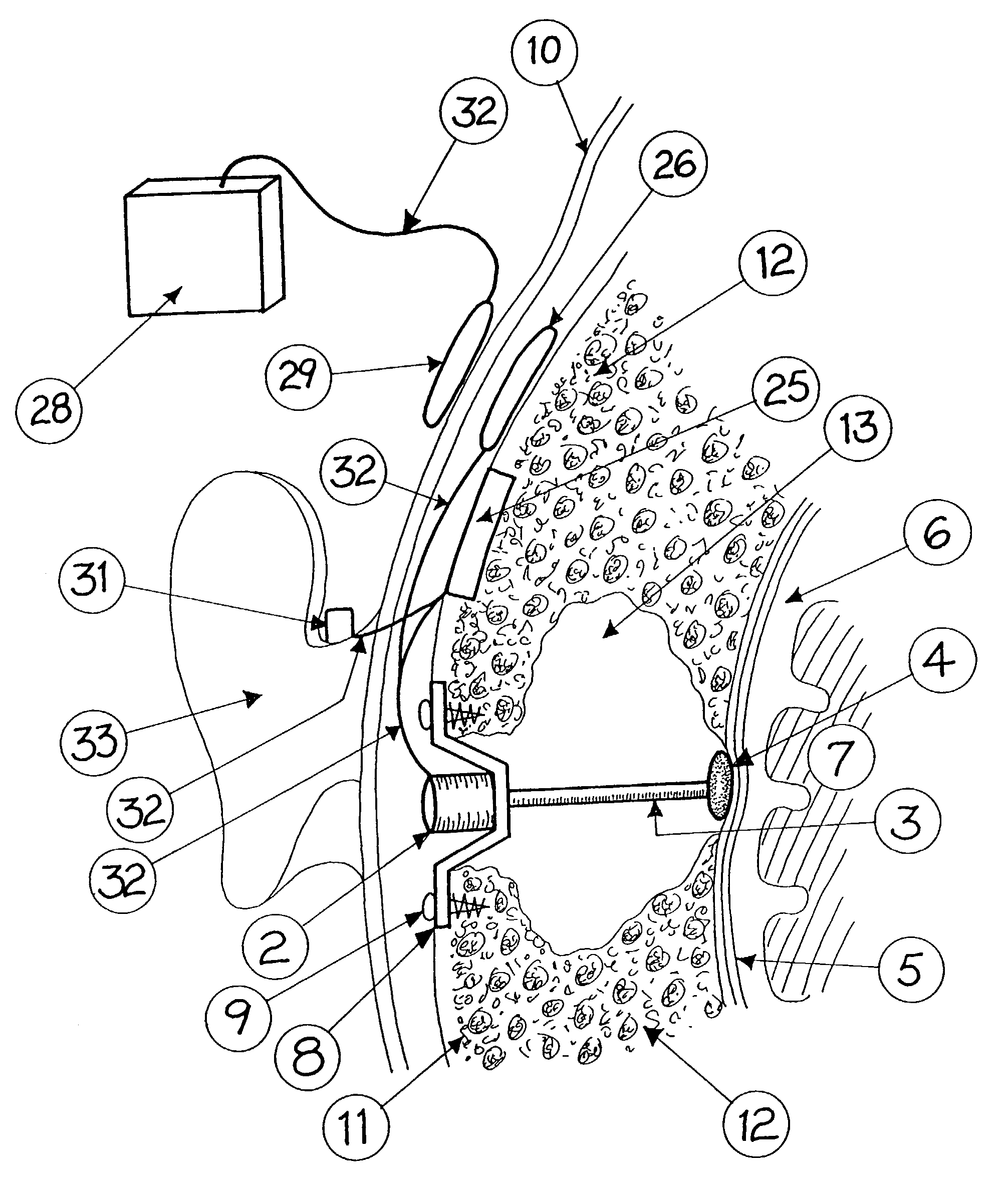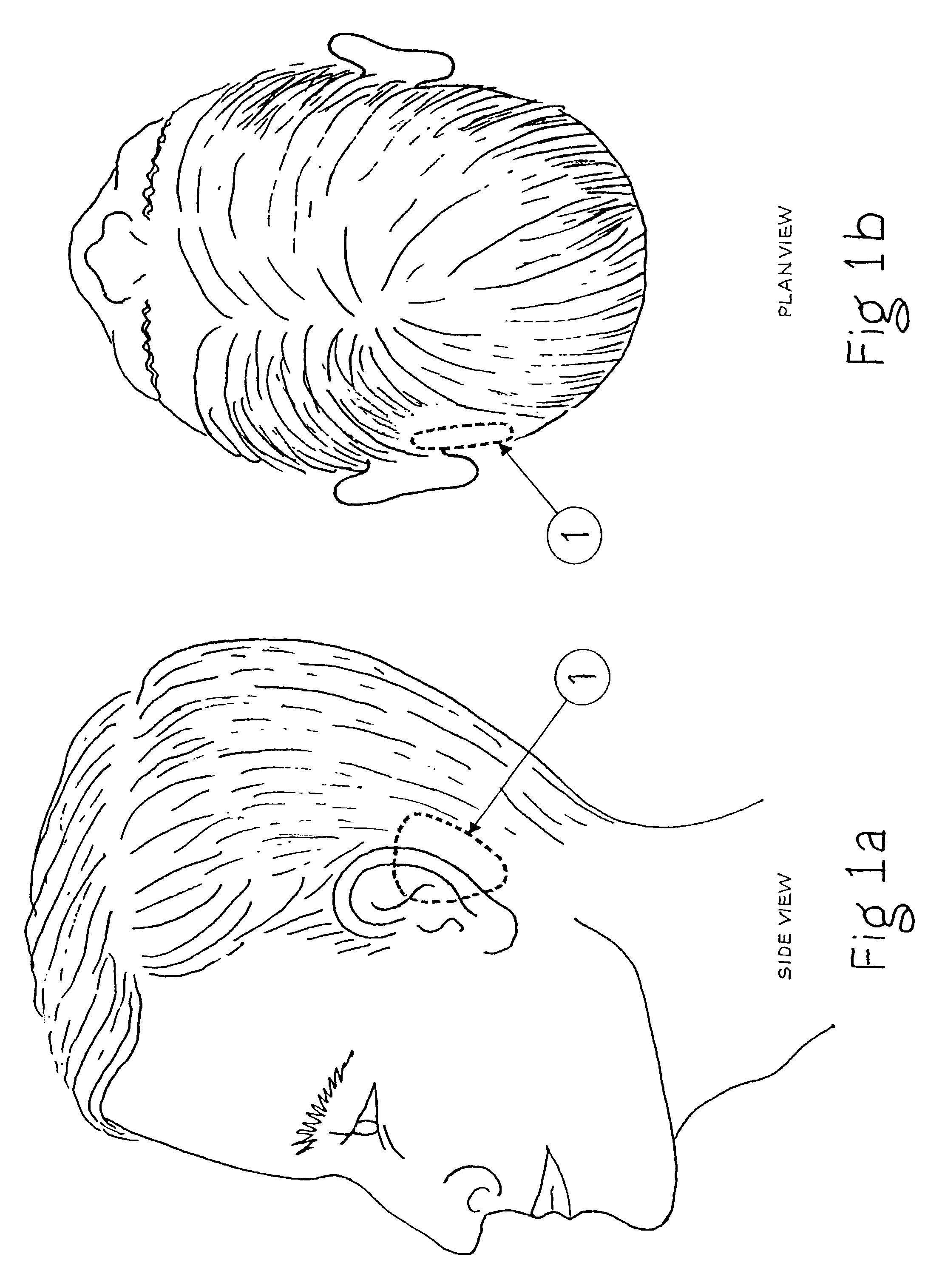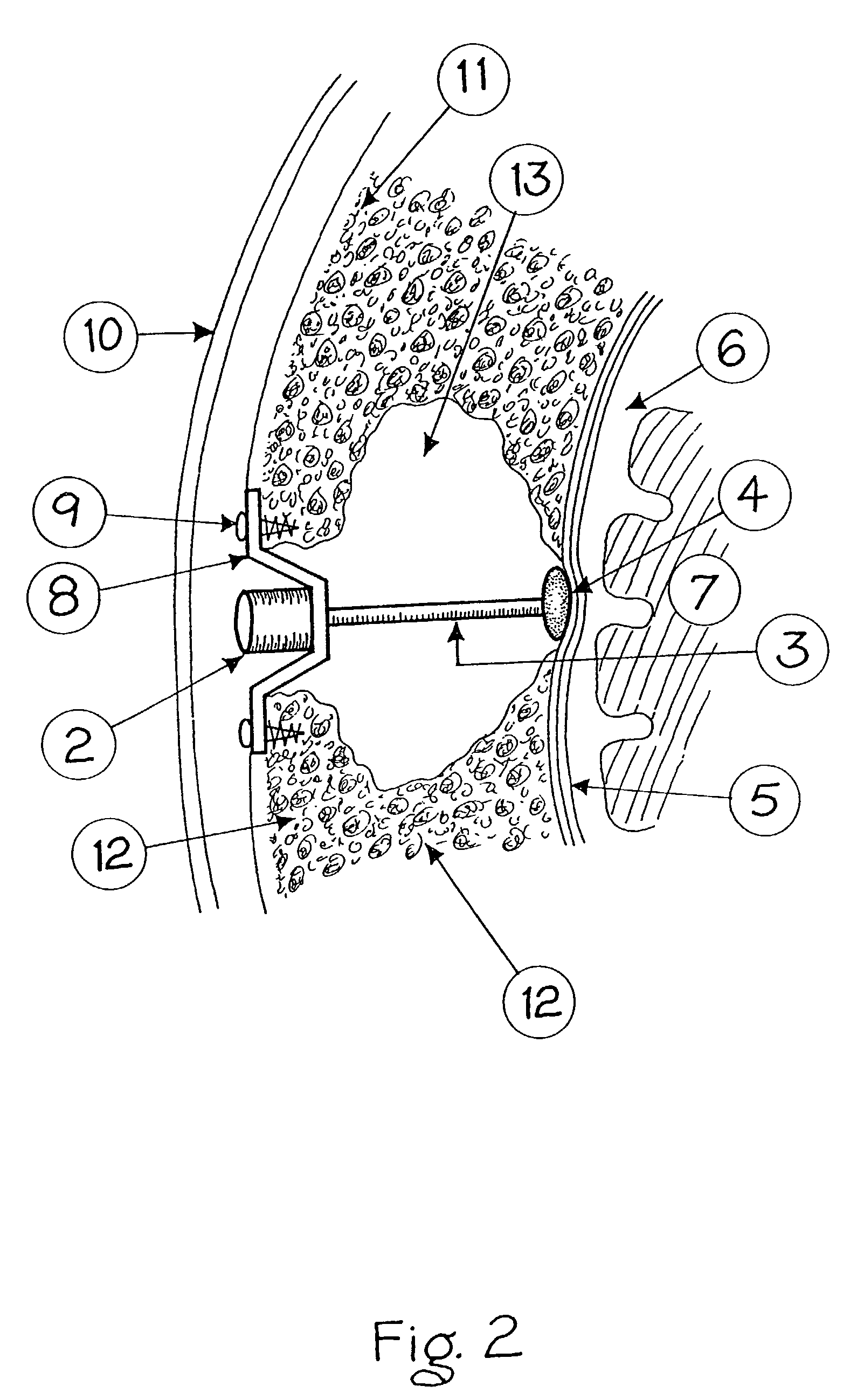Surgically implantable hearing aid
a hearing aid and implantable technology, applied in the field of surgical implantable hearing aids, can solve the problems of halisterisis or dissolution of the bone at the point of attachment, difficulty in hearing aids, and difficulty in hearing aids, and achieve the effect of enhancing the hearing of a person
- Summary
- Abstract
- Description
- Claims
- Application Information
AI Technical Summary
Benefits of technology
Problems solved by technology
Method used
Image
Examples
Embodiment Construction
[0030]Throughout the following description, specific details are set forth in order to provide a more thorough understanding of the invention. However, the invention may be practiced without these particulars. In other instances, well known elements have not been shown or described in detail to avoid unnecessarily obscuring the invention. Accordingly, the specification and drawings are to be regarded in an illustrative, rather than a restrictive, sense.
[0031]Recent advances in knowledge (Freeman S., et al. in Bone conduction experiments in animals—evidence for a non-osseous mechanism, Hearing Research 146 (2000) 72–80) demonstrate a hitherto unknown route for sound waves to reach the inner ear via the brain and fluids inside the skull. The subject invention involves transmitting external sound waves to the brain via the dura mater.
[0032]The preferred embodiment of the surgically implantable invention comprises:
[0033](a) a microphone which receives sound waves and converts them to el...
PUM
 Login to View More
Login to View More Abstract
Description
Claims
Application Information
 Login to View More
Login to View More - R&D
- Intellectual Property
- Life Sciences
- Materials
- Tech Scout
- Unparalleled Data Quality
- Higher Quality Content
- 60% Fewer Hallucinations
Browse by: Latest US Patents, China's latest patents, Technical Efficacy Thesaurus, Application Domain, Technology Topic, Popular Technical Reports.
© 2025 PatSnap. All rights reserved.Legal|Privacy policy|Modern Slavery Act Transparency Statement|Sitemap|About US| Contact US: help@patsnap.com



